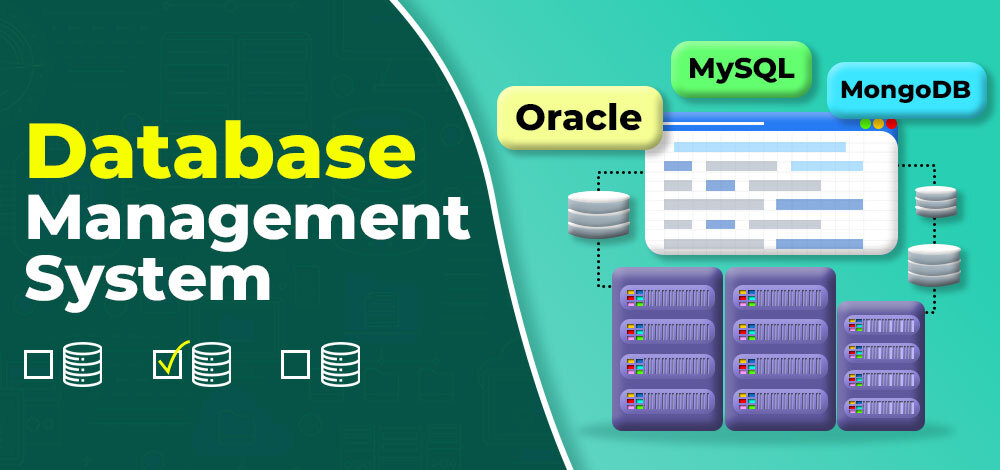Millions of data are being generated daily. And companies store their valuable data in databases. A database is organized information stored in a dedicated system. To process the data stored in the system, the role of the database management system comes into the picture. Analogically, it’s like an office with the number of files stored in it.

Database management systems (abbreviated as DBMS) are tools that help enterprises manage data (fetch, store, update, optimize) from databases. Security is one of the major reasons companies are switching to the database management system. There is a large number of database management systems at present and each of them comes with a unique feature and specialties. Still, there arises a lot of confusion as to which is the most popular database management system in terms of capabilities of its features, has the best data modeling tool, and the licensing. As per the survey 2022, Oracle has the highest-ranking score of 1266.89 followed by Microsoft, IBM, and many more.
So, we have brought to you Most Popular Database Management Systems, based on their ranking.
1. Oracle
Oracle DBMS, an effective object-relational DBMS, a multi-model database management system, is mostly used for processing online transactions, and data warehousing. Its latest version is 12c where c stands for cloud computing. The supporting systems are Windows, UNIX, and Linux. This version has larger databases, is more secure, consumes less memory, and processes data very quickly. Due to its high functionality and reliability, it is commonly used by large companies such as UnitedHealth, Citigroup, and JPMorgan Chase.
Features:
- Easy backup and recovery.
- Deploying a database is possible, be it a public cloud, or even a private cloud, and data center.
- Has a single database for all data types.
- Uses encryption techniques, data masking, key management, and monitoring activities to safeguard the database.
2. MySQL
MySQL (My-Structured Query Language), is a free, open-source relational and again a multi-model database management system. A reliable, cost-effective tool that is implemented to enhance the security and scalability of the database. Its functionality includes high-speed data processing and data recovery increases its popularity. It supports Windows, Linux, Mac, and Ubuntu. Large organizations such as Google, Adobe, Facebook, and WordPress use this tool for the database management system.
Features:
- Provides technical support to the users and developers.
- Supports client-server architecture.
- Easy integration with other engines like Apache.
- Responsive and open community support.
To get information about common MySQL Queries click here.
3. Microsoft SQL Server
Microsoft SQL Server, an effective and commercial relational database management system. It provides efficient workload management and the same database can be used by multiple users. It creates specific containers allowing users to combine views and scripts of a group. You can store, modify, analyze and secure the data. It supports Windows and Linux operating systems. Companies using this tool are Penguin Random House LLC (United States), and MSLGROUP(France).
Features:
- Easy backup and recovery.
- Highly secure and consistent.
- Setting up a new database is easy.
- Can create tables and designs without syntax.
- Supports analytics, transaction processing applications, and business intelligence.
4. PostgreSQL
PostgreSQL is a free, advanced, and open-source relational database management system. Exporting and importing data is a key functionality this tool possesses. Combining features like storing and scaling complex data workloads. To enhance functionality, it has a wide range of plug-ins. It supports programming languages like JSON and Python. It can be used in Windows and Linux operating systems. Major companies like Netflix, Uber, and Instagram use this tool.
Features:
- Keeps a large amount of data secure.
- Supports ACID property.
- Compatible with data integrity.
- Has inheritance feature from the parent table.
5. MongoDB
MongoDB is an open-source, cross-platform, document-oriented, and NoSQL database management system. This tool does not require a table schema description. This tool is mostly preferred by developers working with high-volume data storage. This is available as a fully managed cloud service and self-managed infrastructure as well. It supports Linux, Windows, and macOS operating systems. Also, organizations using this tool are Adobe, ADP, Barclays, and AstraZeneca.
Features:
- Authentication and Indexing.
- Has licensing options for both, cloud and local devices.
- Supports programming languages like C, C#, Java, and JavaScript.
- Supports sharding (method for distributing a single dataset across multiple databases)
6. Redis
Redis (Remote Dictionary Server) is an open-source database tool used as a cache, streaming engine, and message broker that works with an in-memory dataset. It has built-in replication, transactions, and Lua scripting. It is a key-value, and NoSQL database management system, coded with ANSI C language. This supports asynchronous replication, auto-reconnection, and partial resynchronization. It supports Windows and Linux operating systems.
Features:
- Highly available
- Persistent and Extensible
- Provides automatic data partitioning
- Clustering (hash-based sharding)
7. IBM Db2
IBM Db2 is a database management tool, which was formerly known as DB2. It is best for its support for data science languages like Python and handle frameworks. It stores a large amount of data instantly. It has AI-powered capabilities to modernize the management of structured and unstructured data as well whether it’s a local or cloud environment. This tool supports multiple Windows, UNIX, and Linux versions.
Features:
- High availability
- Scalable and Secure
- Data retrieval is quick
- Table or range partitioning
8. SQLite
SQLite, written in C language is an open-source relational database management system. Using this tool, you can change files into smaller sizes with lesser metadata. It is reliable and mostly used for mobile applications and hence, is the most used database engine. It can manage low to medium-traffic HTTP requests and can be used as a temporary dataset. It is compatible with Windows, Mac, Linux, and Solaris.
Features:
- Backup API
- Null Handling
- Partial Indexes
- Standalone CLI (Command Line Interface)
- Multi-threaded programs

